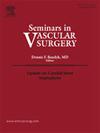The Use of Simulation in Vascular Surgery Education: Current State and Future Directions
IF 2.4
3区 医学
Q1 PERIPHERAL VASCULAR DISEASE
引用次数: 0
Abstract
Simulation-based training (SBT) has become essential in vascular surgery education, providing a risk-free environment for skill development. This scoping review evaluates the current state of vascular surgery simulation, highlighting validated models, educational impact, and areas for improvement. A systematic literature search was conducted in PubMed, Embase, and Scopus, following PRISMA-ScR guidelines. Studies assessing validated simulation models for open and endovascular procedures, vascular anastomosis, carotid interventions, peripheral vascular interventions, and nontechnical skills training were included. Data extraction focused on fidelity, skill acquisition, procedural efficiency, and accessibility. Validated high-fidelity models, including 3D-printed, virtual reality (VR), and pulsatile cadaveric systems, significantly enhance technical proficiency and confidence. Bench and porcine models improve vascular anastomosis training, while VR-based simulators enhance catheter manipulation and decision-making. However, simulation remains limited by high costs, accessibility challenges, and lack of standardized nontechnical skills training. Simulation improves competency in vascular surgery but requires further integration into training curricula. AI-driven assessments, hybrid simulation models, and expanded cost-effective solutions are needed to bridge existing gaps. Standardization and broader adoption of simulation will enhance competency-based training and improve patient outcomes.
模拟在血管外科教学中的应用:现状与未来方向
基于模拟的训练(SBT)在血管外科教育中已经成为必不可少的,为技能发展提供了一个无风险的环境。这篇综述评估了血管外科模拟的现状,强调了经过验证的模型、教育影响和需要改进的领域。按照PRISMA-ScR指南,在PubMed、Embase和Scopus中进行了系统的文献检索。研究评估了开放和血管内手术、血管吻合、颈动脉介入、外周血管介入和非技术技能培训的有效模拟模型。数据提取注重保真度、技能获取、程序效率和可访问性。经过验证的高保真模型,包括3d打印、虚拟现实(VR)和脉动尸体系统,显著提高了技术熟练程度和信心。台式和猪模型提高了血管吻合训练,而基于vr的模拟器提高了导管操作和决策能力。然而,模拟仍然受到高成本、可访问性挑战和缺乏标准化非技术技能培训的限制。模拟提高了血管外科的能力,但需要进一步整合到培训课程中。需要人工智能驱动的评估、混合模拟模型和扩展的成本效益解决方案来弥合现有差距。模拟的标准化和广泛采用将加强基于能力的培训并改善患者的治疗效果。
本文章由计算机程序翻译,如有差异,请以英文原文为准。
求助全文
约1分钟内获得全文
求助全文
来源期刊
CiteScore
3.50
自引率
4.00%
发文量
54
审稿时长
50 days
期刊介绍:
Each issue of Seminars in Vascular Surgery examines the latest thinking on a particular clinical problem and features new diagnostic and operative techniques. The journal allows practitioners to expand their capabilities and to keep pace with the most rapidly evolving areas of surgery.

 求助内容:
求助内容: 应助结果提醒方式:
应助结果提醒方式:


